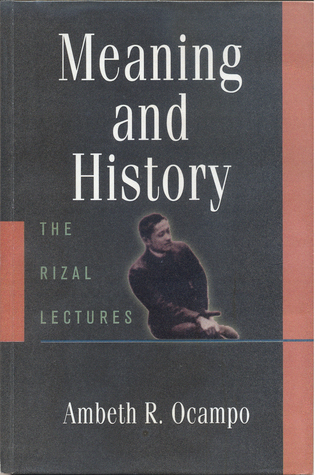An introduction to the basic concepts and tenets of political science focusing on politics, governance and government. The course also tackles the 1897 Philippine Constitution-the fundamental law of the republic. The course is focused on providing the interpretations on the constitution specifically. The executive branch, the Legislative Branch, the Judicial Branch and Bill of Rights. This is a three unit course in the Philippine education system mandated by the Commission on Higher Education (CHED) for the tertiary level.
The course aims to expose students to different facets of Philippine history through the lens of eyewitnesses. Rather than rely on secondary material such as textbooks, which is the usual approach in teaching history, different types of primary sources will be used-written (qualitative and quantitative, oral, visual, audio-visual, digital-covering various aspects of Philippine life (political, economic, social, cultural). Students are expected to analyze the selected readings contextually and in terms of content (stated and implied). The end goal is to enable students to understand and appreciate our rich past by deriving insights from those who were actually present at the time of the event.
Contextual analysis considers the following: (i) the historical context of the source (time and place it was written and the situation at the time), (ii) the author’s background, intent (to the extent discernible), and authority on the subject; and (iii) the source’s relevance and meaning today.
Content analysis, on the other hand, applies appropriate techniques depending on the type of source (written, oral, visual). In the process students will be asked, for example, to identify the author’s main argument or thesis, compare points of view, identify bias, and evaluate the author’s claims based on the evidence presented or other available evidence at the time. The course will guide the students through their reading and analysis of the texts and require them to write reaction essays of varied length and present their ideas in other ways (debate format, power point presentation, letter to the author of the source, etc).
The instructor may arrange the readings chronologically or thematically, and start with the present (more familiar) and go back to the earlier periods or vice-versa.

- Teacher: Ana Maria Belinda Yting
| The course aims to expose students to different facets of Philippine history through the lens of eyewitnesses. Rather than rely on secondary material such as textbooks, which is the usual approach in teaching history, different types of primary sources will be used-written (qualitative and quantitative, oral, visual, audio-visual, digital-covering various aspects of Philippine life (political, economic, social, cultural). Students are expected to analyze the selected readings contextually and in terms of content (stated and implied). The end goal is to enable students to understand and appreciate our rich past by deriving insights from those who were actually present at the time of the event. Contextual analysis considers the following: (i) the historical context of the source (time and place it was written and the situation at the time), (ii) the author’s background, intent (to the extent discernible), and authority on the subject; and (iii) the source’s relevance and meaning today. Content analysis, on the other hand, applies appropriate techniques depending on the type of source (written, oral, visual). In the process students will be asked, for example, to identify the author’s main argument or thesis, compare points of view, identify bias, and evaluate the author’s claims based on the evidence presented or other available evidence at the time. The course will guide the students through their reading and analysis of the texts and require them to write reaction essays of varied length and present their ideas in other ways (debate format, power point presentation, letter to the author of the source, etc). The instructor may arrange the readings chronologically or thematically, and start with the present (more familiar) and go back to the earlier periods or vice-versa. |
||||||||||||||

- Teacher: Ana Maria Belinda Yting
The course aims to expose students to different facets of Philippine history through the lens of eyewitnesses. Rather than rely on secondary material such as textbooks, which is the usual approach in teaching history, different types of primary sources will be used-written (qualitative and quantitative, oral, visual, audio-visual, digital-covering various aspects of Philippine life (political, economic, social, cultural). Students are expected to analyze the selected readings contextually and in terms of content (stated and implied). The end goal is to enable students to understand and appreciate our rich past by deriving insights from those who were actually present at the time of the event.
Contextual analysis considers the following: (i) the historical context of the source (time and place it was written and the situation at the time), (ii) the author’s background, intent (to the extent discernible), and authority on the subject; and (iii) the source’s relevance and meaning today.
Content analysis, on the other hand, applies appropriate techniques depending on the type of source (written, oral, visual). In the process students will be asked, for example, to identify the author’s main argument or thesis, compare points of view, identify bias, and evaluate the author’s claims based on the evidence presented or other available evidence at the time. The course will guide the students through their reading and analysis of the texts and require them to write reaction essays of varied length and present their ideas in other ways (debate format, power point presentation, letter to the author of the source, etc).
The instructor may arrange the readings chronologically or thematically, and start with the present (more familiar) and go back to the earlier periods or vice-versa.

- Teacher: Ana Maria Belinda Yting
